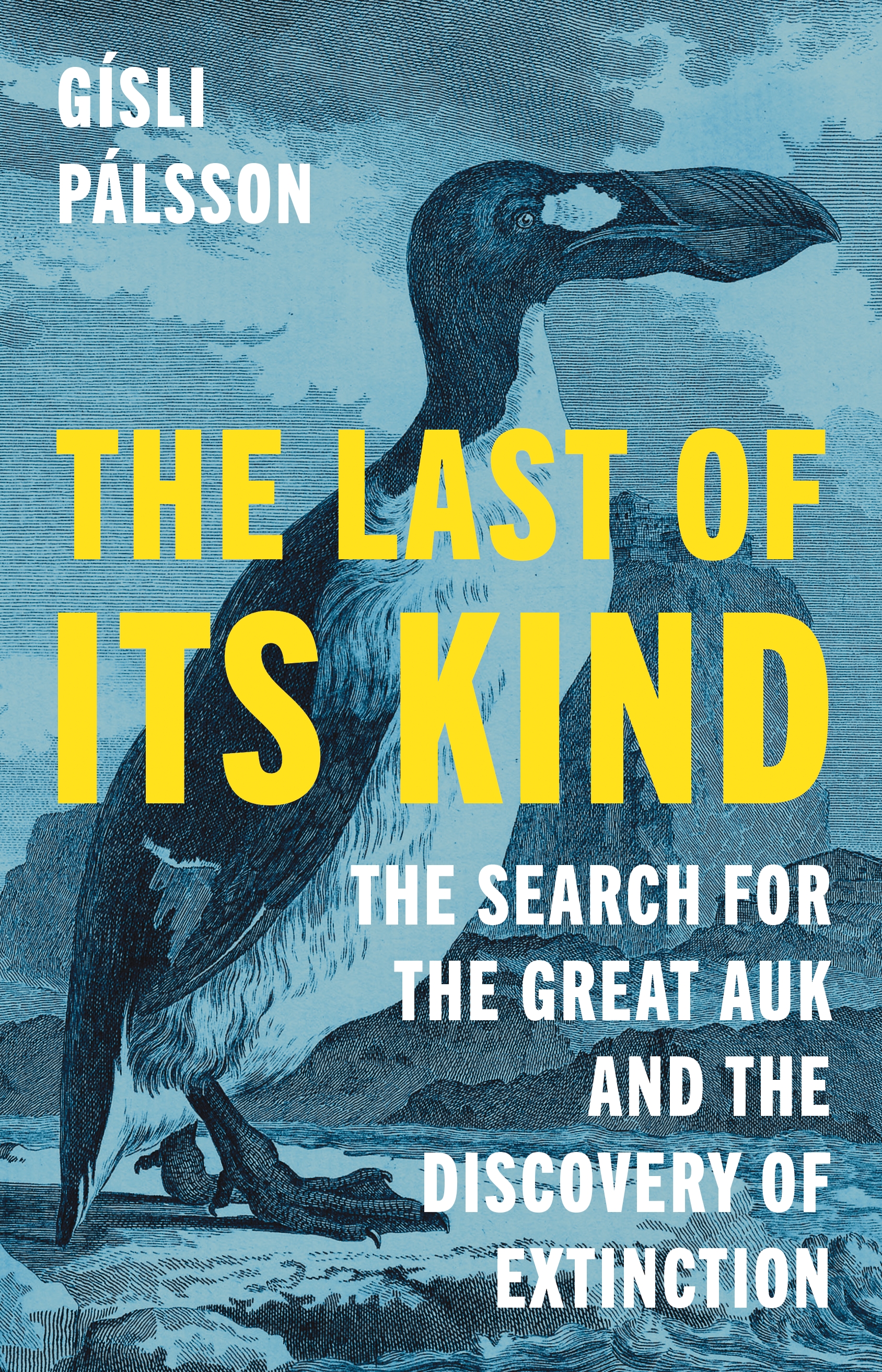The great auk is one of the most tragic and documented examples of extinction. A flightless bird that bred primarily on the remote islands of the North Atlantic, the last of its kind were killed in Iceland in 1844. Gísli Pálsson draws on firsthand accounts from the Icelanders who hunted the last great auks to bring to life a bygone age of Victorian scientific exploration while offering vital insights into the extinction of species.
Pálsson vividly recounts how British ornithologists John Wolley and Alfred Newton set out for Iceland to collect specimens only to discover that the great auks were already gone. At the time, the Victorian world viewed extinction as an impossibility or trivialized it as a natural phenomenon. Pálsson chronicles how Wolley and Newton documented the fate of the last birds through interviews with the men who killed them, and how the naturalists’ Icelandic journey opened their eyes to the disappearance of species as a subject of scientific concern—and as something that could be caused by humans.
Blending a richly evocative narrative with rare, unpublished material as well as insights from ornithology, anthropology, and Pálsson’s own North Atlantic travels, The Last of Its Kind reveals how the saga of the great auk opens a window onto the human causes of mass extinction.
Awards and Recognition
- Shortlisted for the Royal Society Trivedi Science Book Prize
- One of The Guardian's Best Science and Nature Books of the Year
"A fascinating, important, and timely book about a major icon of extinction."—Mark V. Barrow Jr., Science
"An engaging book."—Tom Tierney, New Scientist
"What makes The Last of Its Kind special is that it was written by an Icelander, and Icelanders were the last people to live with, and hunt, great auks. Pálsson’s deep knowledge of the Icelandic language and culture allows us to see afresh the last eyewitness accounts of this extinct bird, as well as the consequences of its extinction."—Tim Flannery, The New York Review of Books
"The Last of its Kind is a slow-moving thriller, a murder-mystery where we know from the outset who did it."—Surekha Davies, Times Literary Supplement
"[A] moving and well thought out tale. . . . This book is an important part of an innocent species' life."—Deb Hirt, Muskogee Phoenix
"[An] engaging story."—Andrew Robinson, Nature
"Through a combination of scientific analysis, personal narratives, and ecological insights, Pálsson crafts a gripping story that underscores the urgent need for conservation efforts to protect endangered species."—John Hague, The Grebe
"[A] thoughtful and melancholy account."—Liam Shaw, London Review of Books
"Remarkable."—Rob Hume, BirdGuides
"Wonderful."—John Miles, Birdwatching
"Much has been written about the demise of the Great Auk . . . and this work by Gísli Pálsson is an important addition to the body of work on this iconic and enigmatic species. It is scholarly and well-presented."—David Gascoigne, Travels with Birds
"Pálsson affectionately profiles Wolley and Newton and thereby gives readers a colorful view of what ornithology and natural history was like in the decades immediately before the publication of Charles Darwin’s On the Origin of Species."—Steve Donoghue, Open Letters Review
"An atmospheric blend of history, travelogue and science."—Anjana Ahuja, The Guardian
“The Last of Its Kind recounts the final chapter of the great auk’s tragic story. Gísli Pálsson’s meditation on the meaning of extinction is thoughtful, clarifying, and deeply moving.”—Elizabeth Kolbert, author of The Sixth Extinction: An Unnatural History
“A richly detailed, insightful, and valuable account of the little-known expedition that finally awakened Victorians to the reality of human-caused extinction.”—Michelle Nijhuis, author of Beloved Beasts: Fighting for Life in an Age of Extinction
“The extinction of the great auk took place in real time and under the watchful eyes of European naturalists even as the fate of the famous dodo still puzzled them. Gísli Pálsson brilliantly explores the cultural climate in which the idea of human-induced extinction became accepted as scientific fact. Pálsson’s elegantly written historical ethnography tells a story that unites the settled ecological past, the ambivalent present, and the probable future.”—Jonathan Marks, author of Is Science Racist?
“Iceland was where, in 1844, the last great auks were seen and killed—an event documented a few years later by British ornithologists John Wolley and Alfred Newton. Using Wolley’s long-forgotten notebooks, Icelandic anthropologist Gísli Pálsson has created a marvelous and penetrating biography of a bird whose extinction is a powerful reminder of our own culpability and vulnerability.”—Tim Birkhead, author of Birds and Us
“This book puts the story of the great auk and its sad disappearance in the much wider context of recent extinctions.”—Errol Fuller, author of The Great Auk: The Extinction of the Original Penguin

































